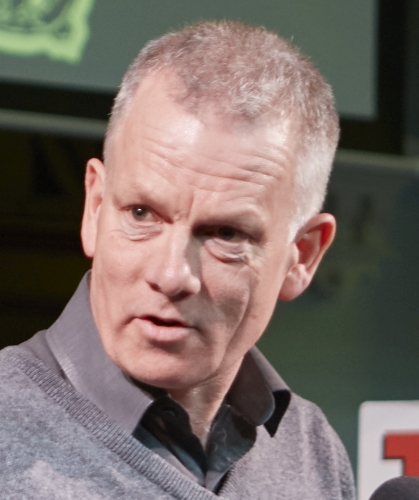COVID has shown teachers what it’s like for youth workers

Graeme Tiffany reflects on how the teaching challenges thrown up by the pandemic echo those that youth workers have faced for some time…

With schools now fully reopened, it’s worth considering one under-reported challenge presented by the move to online learning – namely ‘remote behaviour’.
It’s a topic that seems to rattle people’s confidence and threaten our very identity as educators – not just school teachers, but those making up the army of informal educators in our communities. Think youth workers and community educators.
We’ve all had an unprecedented shared experience – one consisting of staring into screens while attempting to educate students in an unfamiliar ‘remote’ space, COVID-19 having made schools and youth centres largely inaccessible to the majority of those who typically use them.
My interest here, however, is to point out that what both school teachers and informal educators have recently lived through has long been a daily reality for a further group of educators – namely ‘detached’ youth workers who engage with street corner society, and who have been working out there, within communities in public spaces throughout the pandemic.
Student engagement
To those who have worked in youth clubs, community centres, classrooms or lecture theatres – can you imagine what would happen if the walls framing those spaces suddenly fell down, allowing those present to simply walk away?
That’s what it’s like to be a detached youth worker, and having been one myself for many years, I can confirm the similarities with remote learning.
Intriguingly, once the power constituted by the walls of a learning environment are stripped away, many disciplinary sanctions – detentions, isolation, exclusions – become farcical. What can you do when the young person is already at home?
Put them under curfew and prevent them from going outside? During a government-imposed lockdown? I hope he forgives me for dobbing him in, but during some of my lad’s online lessons I’ve found him strumming his guitar (outside of music lessons), playing games on his phone or heading off for a shower, safe in the knowledge that if pressed, he can always blame ‘tech issues’.
Yet at other times he seems to be in thrall to some alien force – eyes wide open, furiously scribbling notes, utterly captivated, and even laughing while learning.
What’s happening here? Well, to my eyes, it’s the prioritisation of engagement – a daily necessity for detached workers, who can never assume the presence of a ‘captive audience’. It’s down to them – and only them – to keep engaged the audience they have.
And what helps with that is researching the community your audience is drawn from, learning about them and building relationships. Without those, you can expect any prospect of learning to disappear on the wind.
Helping students want to learn
Those working in the street accept that theirs is a practice without any formal authority or walls. What might seem like powerlessness, however, actually confers a significant prize.
Because when those we work with can literally walk away at any point, their choice to remain present unequivocally demonstrates their intrinsic motivation.
This is education sans murs; an education spent ‘outside’, both physically and philosophically. In place of a curriculum, there’s an iterative process that shape shifts according to learner interests, stimulated by educators’ provocations (usually good questions).
There are no exams (sound familiar?), no age-related expectations and a temporality distinct from the ‘clock time’ presided over by the school bell.
This is a form of practical learning that’s centred around a participatory process – the principle that those most affected by certain decisions have a right to be involved in making them.
This ‘without walls’ approach can be applied just as successfully within school-based remote learning and classroom settings, where notions of working ‘outside’ take on more of a philosophical character.
In fact, it starts to resemble the type of ‘democratic education’ many of us will have discussed during our training, but forgotten by the time we arrived at our civil society or institutional settings. If we’re fortunate, one legacy of COVID will be that those discussions can resume.
Graeme Tiffany is an independent education consultant, scholar, trainer, lecturer and researcher in informal and community education; for more information, visit graemetiffany.co.uk or follow @GraemeTiffany.












